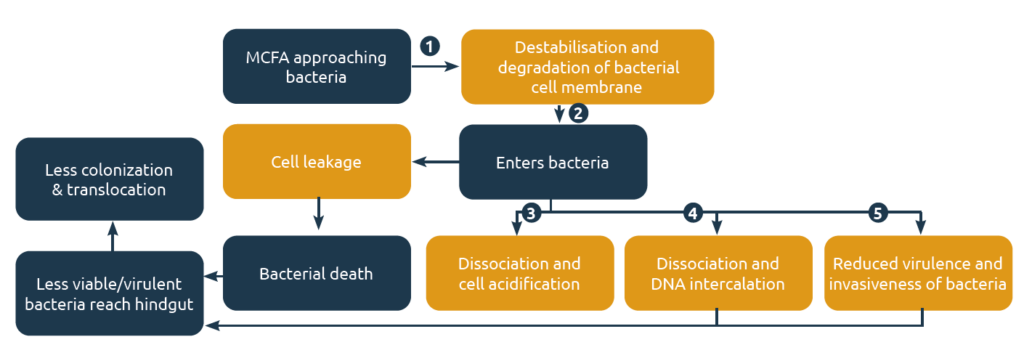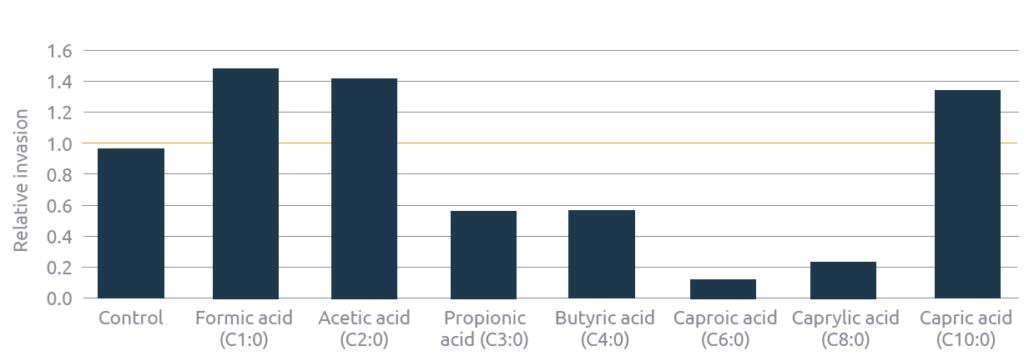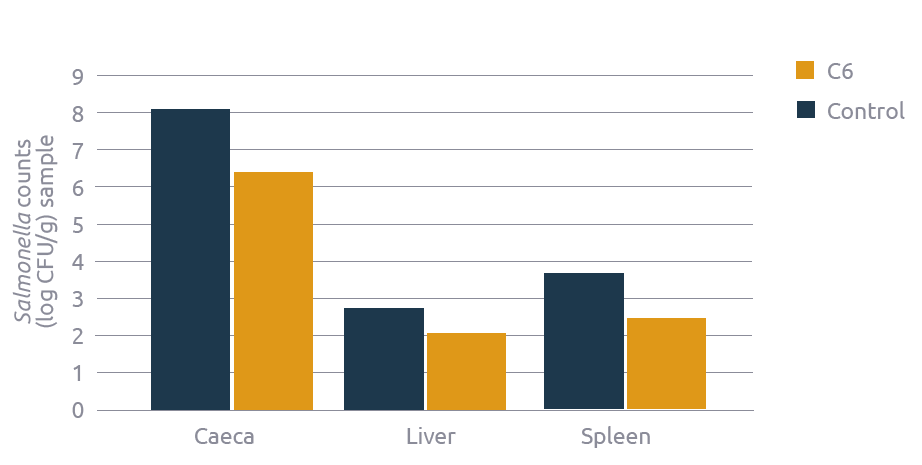Written by David Hermans, Product Developer Poultry at Agrifirm
Salmonella belongs to the group of gram-negative bacteria and is part of the natural flora of many animal species. Of the serotypes isolated from birds, only two can cause disease with high mortality in poultry: S. gallinarum and S. pullorum (typhoid group), unique to poultry species. All other serotypes (non-typhoid group) however are largely carried asymptomatically by poultry and can be carried over to humans by contaminated poultry products. Indeed, today, salmonellosis is still one of the most reported zoonotic diseases in humans worldwide, and poultry products such as meat and eggs are considered major vehicles.
To effectively reduce salmonellosis in humans, the transmission of this pathogen from poultry should be minimized as much as possible. The epidemiology of non-typhoid Salmonella, however, is very complex as the bacteria are widespread in the environment and can enter a poultry house in many ways: either horizontal (via contaminated feed or drinking water, farm personnel, equipment, and animals) or vertical (from the parent stock through the hatchery) transmission. In addition, several serotypes can be present in a poultry flock at the same time and within-flock prevalence differences may occur, making the use of vaccines not always effective. Although several intervention strategies are implemented today in poultry rearing—driven by regional regulations and national control plans—Salmonella is still omnipresent.
Medium-chain fatty acids (MCFAs) are saturated unbranched monocarboxylic acids (from C6 to C12) with strong antibacterial effects against a broad range of pathogens, including Salmonella. MCFAs can approach the phospholipid bilayer of bacterial cell membranes only when undissociated, which happens more pronouncedly at an environmental pH below their pKa value. MCFAs work by disrupting the bacterial cell membrane, leading to cell leakage (Figure 1.1), followed by entering the bacteria (1.2) where the dissociation process (driven by the neutral intracellular pH) leads to cell acidification (1.3) and DNA intercalation by dissociated MCFAs molecules (1.4), ultimately blocking bacterial replication.

The more MCFA molecules are undissociated, the more pronounced the above effects will be. Indeed, the minimal inhibitory concentration (MIC) value of MCFAs against Salmonella decreases about 4- to 8-fold for every unit the pH drops. This implies that the gizzard of poultry (where pH is very low) is the primary site of action for MCFAs, forming a strong barrier that limits Salmonella passage to the hindgut.
There are several products on the market that aim to control Salmonella at the feed level. However, recent data from the European Food Safety Authority revealed that less than 0.5% of poultry feed samples tested in the EU were positive for Salmonella from 2020 to 2021. This indicates that only looking at the feed level is insufficient in controlling the risk of Salmonella entering the poultry house. A more effective control strategy may be to make the birds less susceptible to Salmonella colonization, as in the bird all potential entry points can be tackled in one movement. A huge asset of certain MCFAs, over most short-chain fatty acids (SCFAs), is that they reduce Salmonella virulence by reducing its potential to invade gut epithelial cells (Figure 1.5) at concentrations below those that directly kill or inhibit the growth of this bacterium. Figure 2 clearly shows how crucial it is to select the right acids to reach the desired effect, as C6 and C8 largely reduce Salmonella invasion, while other acids seem to promote it.

As such, fatty acids may already lower gut colonization and translocation to organs at very low concentrations, as documented for caproic acid (C6) (Figure 3). The amount of Salmonella-positive birds was significantly (P=0.008) reduced by adding C6 to the diet at 3 kg/mT, as evidenced by a reduction in positive cloacal swabs taken one day after 5-day-old hens were inoculated with Salmonella Enteritidis. Three days after inoculation, cecal colonization was significantly (P=0.005) reduced, as was translocation to the liver (P=0.043), while there was also a trend (P=0.060) towards lower splenic counts in the C6-treated group.

Finally, MCFAs have also been shown to work on the host’s resilience towards Salmonella colonization through an increased expression in primary chicken immune cells of antibacterial β-defensin 9, which can be downregulated by Salmonella upon colonizing its poultry host via its Type III secretion system, which is the same system driving the invasion process. As such, MCFAs may also indirectly contribute to reduced Salmonella colonization in poultry.
To conclude, natural products aiding in Salmonella control in poultry during primary production in a cost-effective way are scarce. Agrimprove provides a range of MCFA-based products that contribute to a reduced Salmonella risk in poultry by tackling the issue from several angles in an integrated and cost-effective approach.